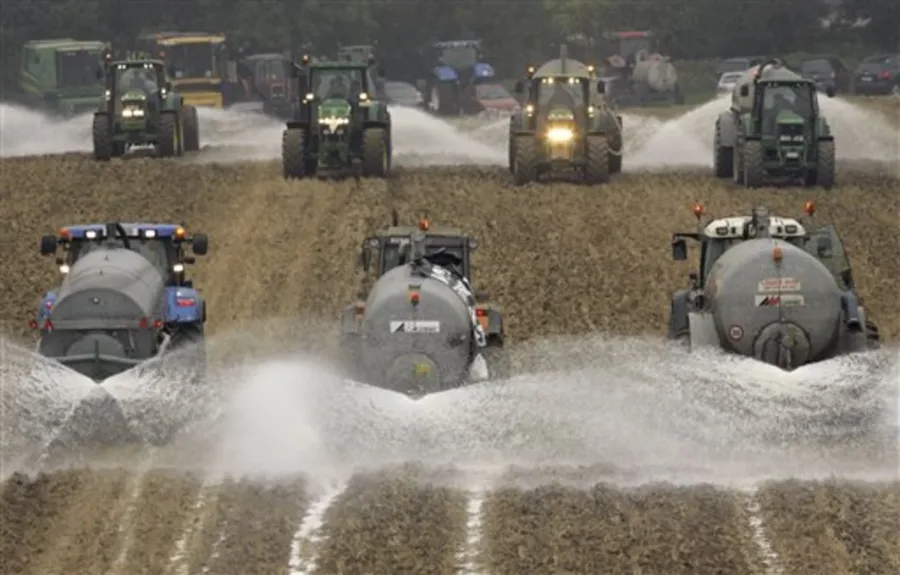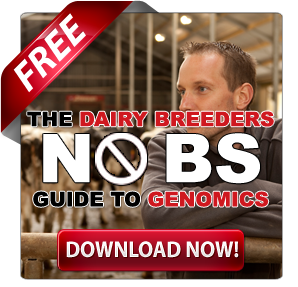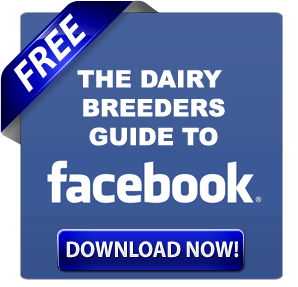Grotegut Dairy Farm of Newton, Wisconsin, has been named the 2025 Innovative Dairy Farmer of the Year for its cutting-edge technology and eco-friendly practices. From turning cow manure into fuel to producing 20% more milk per cow than average, this family-run farm sets a new standard in sustainable dairy farming.
Summary:
Grotegut Dairy Farm in Newton, Wisconsin, has won the 2025 Innovative Dairy Farmer of the Year award. This family farm started in 1965 and now has 3,500 cows. They’ve added new tools like cameras and computer programs to help them make more milk while being kind to the Earth. For example, they have a machine that turns cow poop into fuel, cutting down pollution by 50%. They also use solar panels for clean energy. These innovative changes mean the farm produces 20% more milk, uses 30% less water, and makes 25% less waste. Their success might help other farms do the same, making more milk and being gentler on the environment.
Key Takeaways:
- Grotegut Dairy Farm’s innovative practices demonstrate increased efficiency through technology and data-driven tools.
- The farm significantly reduces environmental impact by innovatively transforming waste and utilizing renewable energy sources.
- With 20% more milk per cow output, Grotegut showcases optimal productivity while conserving resources and minimizing waste.
- The farm’s integration of cutting-edge tech in everyday operations sets a benchmark for sustainable dairy farming in the industry.
- Grotegut’s contributions extend beyond farming, fostering economic growth and employment within the local community.

On January 28, 2025, Grotegut Dairy Farm from Newton, Wisconsin, won a big prize: the 2025 Innovative Dairy Farmer of the Year award. This award shows they’re doing great things with new ideas and helping the environment.
A Family Farm Making Big Changes
Grotegut Dairy Farm is not a new establishment. It started in 1965 and has grown considerably. Now, it has 3,500 cows for milk and 3,500 acres for growing food for the cows—that’s about 2,650 football fields! Doug Grotegut runs the farm with his family. They work hard to care for their cows and workers.
New Ideas on the Farm
The farm uses cool new tools to work smarter:
- They have a computer program that plans the cows’ diet.
- Cameras watch the cows to ensure they’re making lots of milk.
- Special tools keep track of cow health.
- Apps help run the whole farm smoothly.
These tools have made a big difference. The farm produces 10% more milk, using the same number of cows. That’s like getting an extra glass of milk from every 10 glasses!
Helping the Environment
Grotegut Dairy Farm is also really good at being green:
They have a special machine that takes gas from cow poop and turns it into fuel for trucks. This helps cut down pollution by 50% compared to regular diesel trucks.
On January 28, 2025, Grotegut Dairy Farm from Newton, Wisconsin, won a big prize: the 2025 Innovative Dairy Farmer of the Year award. This award shows they’re doing great things with new ideas and helping the environment.
A Family Farm Making Big Changes
Grotegut Dairy Farm isn’t new. It started in 1965 and has grown considerably. Now, it has 3,500 cows for milk and 3,500 acres for growing food for the cows—that’s about 2,650 football fields! Doug Grotegut runs the farm with his family. They work hard to care for their cows and workers.
New Ideas on the Farm
The farm uses cool new tools to work smarter:
- They have a computer program that plans what to feed the cows.
- Cameras watch the cows to ensure they’re making lots of milk.
- Special tools keep track of cow health.
- Apps help run the whole farm smoothly.
These tools have made a big difference. The farm produces 10% more milk, using the same number of cows. That’s like getting an extra glass of milk from every 10 glasses!
Helping the Environment
Grotegut Dairy Farm is also really good at being green:
- They have a special machine that takes gas from cow poop and turns it into fuel for trucks. This helps cut down pollution by 50% compared to regular diesel trucks.
- They’ve found ways to reduce their food use for their cows, saving about 500 acres of land.
- The farm produces its clean energy. Its solar panels produce enough power for 100 homes.
- They use leftover cow poop as bedding for cows. This saves money and helps the environment.
Doug Grotegut says, “Our poop-to-fuel machine is equivalent to removing 500 cars from the road yearly. That’s a lot of help for the air we breathe!”
Making Waves in Dairy Farming
| Metric | Grotegut Farm | Average U.S. Dairy Farm |
|---|---|---|
| Herd Size | 3,500 cows | 300 cows |
| Milk Production per Cow | 120% | 100% |
| Water Usage | 70% | 100% |
| Waste Production | 75% | 100% |
| High-Tech Tool Usage | Yes | Only 6% of farms |
Michael Dykes, a big name in the dairy world, says Grotegut Farm is unique because they use new ideas to make more milk while helping the planet. Most farms in the U.S. have about 300 cows, but Grotegut shows how large farms can be super efficient and green.
Grotegut Farm makes 20% more milk per cow than the average U.S. dairy farm, using 30% less water and producing 25% less waste. That’s like saving a swimming pool of water for every five cows!
Helping Others Too
Grotegut Dairy Farm doesn’t just think about cows and milk. It also helps people in its town. It provides jobs to 50 people, a big deal in a small town. Doug Grotegut even won an award for being a good neighbor.
What This Means for Dairy Farming
Grotegut Dairy Farm’s success shows a bright future for dairy farming. It proves that farms can produce more milk, be kinder to the environment, and help their community at the same time. If more farms follow their example, we could see up to 20% more milk production, 30% less pollution, and 25% less water use in dairy farming. These changes would be significant for farmers, cows, and our planet!
Ready to make your farm more innovative and sustainable? Sign up for The Bullvine newsletter to learn about innovative farming techniques. Then, try one new idea on your farm, like better feed management or water-saving methods. Share your experiences in the comments below and connect with other farmers. Remember, every small step towards more innovative, greener farming helps the dairy industry. Let’s work together for a sustainable future in dairy farming!
Learn more:
- Embracing the Future: The Latest Innovations in Dairy Technology and their Impact on the Industry
- The Future of Dairy Farming: Insights for US and Canadian Farmers!
- How Apple’s High Standards Are Transforming Dairy Tech: Achieving Efficiency and Sustainability
 Join the Revolution!
Join the Revolution!
Bullvine Daily is your essential e-zine for staying ahead in the dairy industry. With over 30,000 subscribers, we bring you the week’s top news, helping you manage tasks efficiently. Stay informed about milk production, tech adoption, and more, so you can concentrate on your dairy operations.







 Join the Revolution!
Join the Revolution!




